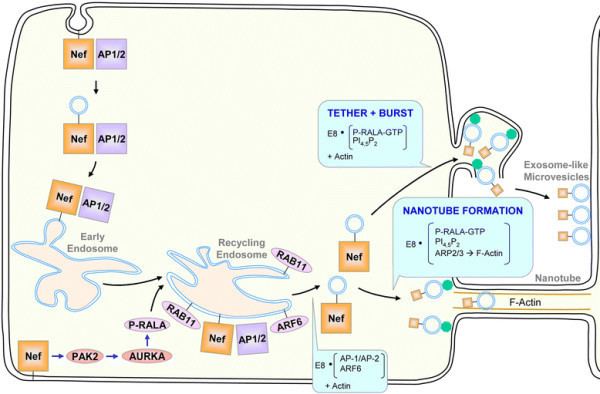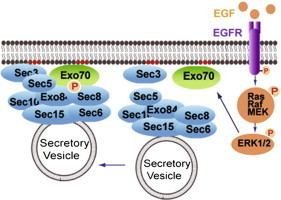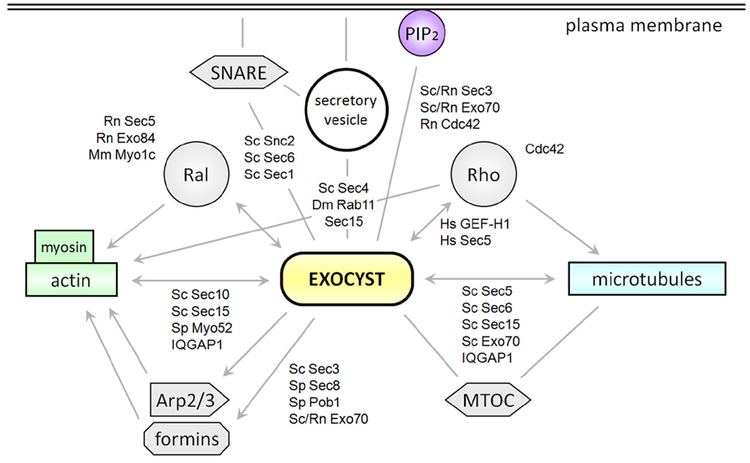 | ||
115 exocyst complex
The exocyst is an octameric protein complex involved in vesicle trafficking, specifically the tethering and spatial targeting of post-Golgi vesicles to the plasma membrane prior to vesicle fusion. It is implicated in a number of cell processes, including exocytosis, cell migration, and growth.
Contents
- 115 exocyst complex
- Septin dependent assembly of the exocyst is essential for plant infection by magnaporthe oryzae
- Subunits
- Function
- References
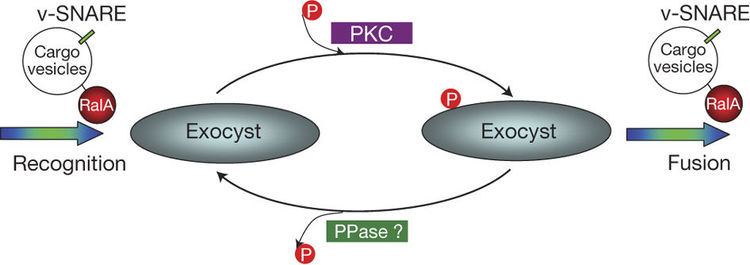
Septin dependent assembly of the exocyst is essential for plant infection by magnaporthe oryzae
Subunits
The exocyst is composed of eight subunits, whose nomenclature differs between mammalian cells and Saccharomyces cerevisiae.
Function
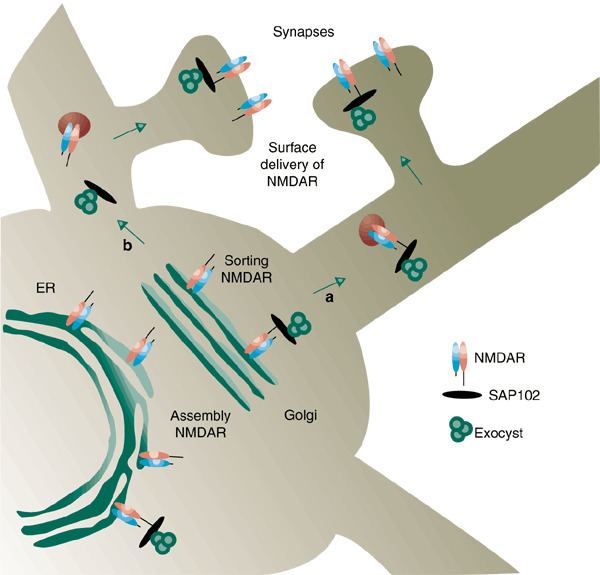
The exocyst complex serves to direct vesicles after the Golgi complex to specific locations on the plasma membrane and to mediate their tethering and localization to the membrane immediately before fusion. Because of this function, the exocyst complex is heavily involved in exocytosis. Sec3 (EXOC1) and Exo70 (EXOC7) are localized to the plasma membrane, and are physically attached to the membrane by Rho GTPases such as CDC42. Other complementary exocyst components such as Sec15 (EXOC6) and Sec4 are localized to the vesicle membrane. Exocyst proteins on the plasma membrane bind vesicular exocyst proteins, bringing the vesicle very close to the plasma membrane in a fashion similar to the SNARE interactions to facilitate fusion.
The exocyst also interacts with Rho GTPases responsible for controlling cell polarity and the activity of the cytoskeleton.
